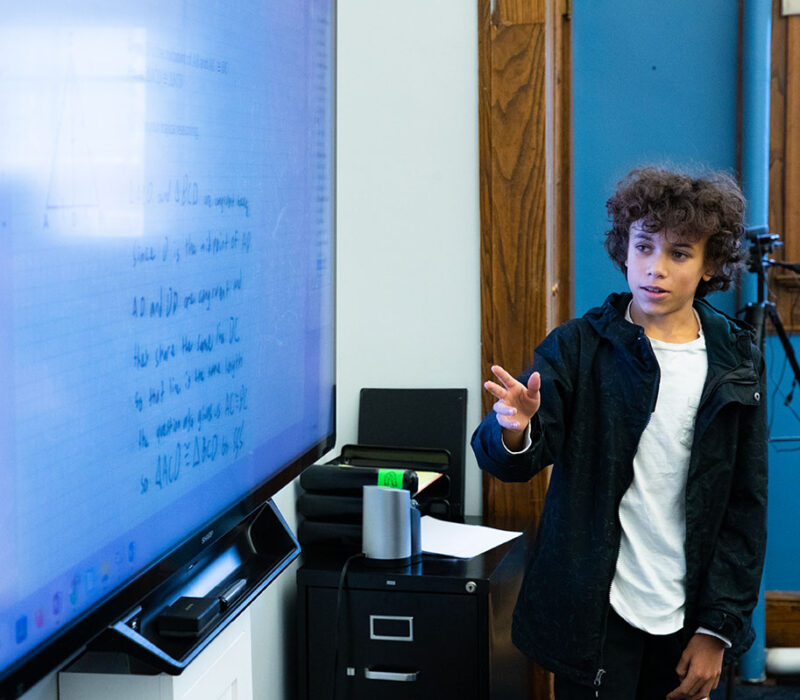Mathematical Problem Solving
Peddie’s two-year Mathematical Problem Solving (MPS) sequence offers an innovative integration of algebra and geometry, typically taught in separate Geometry and Algebra II courses. All math classes at Peddie emphasize problem-based learning, but MPS courses are unique in their focus on cultivating problem-solving skills and attitudes that benefit students throughout their academic journey and beyond.
In the MPS classroom, students take the lead, promoting a student-centered learning environment. They are presented with problems and encouraged to work independently and critically to find solutions, while teachers provide guidance and troubleshooting support. This approach allows students to take ownership of the problem-solving process, developing crucial qualities such as courage and persistence.
MPS homework is designed to be different from traditional assignments. It emphasizes persistence, creativity and resilience over merely finding the correct answer. Students are not expected to solve every problem they encounter. Instead, they face challenges that require them to apply their existing knowledge and critical thinking skills without a prescribed method. They document their thought processes in electronic notebooks, which are then discussed in class, further enhancing their understanding and problem-solving abilities.
By engaging with this unique approach to mathematical problem solving, students at Peddie develop a deep-seated resilience and creativity that prepares them for future mathematical endeavors and life challenges.
To learn more about Peddie’s other math courses and electives, please visit our Math Department page.

How is an MPS classroom different?
The MPS classroom is a place where everyone is active every day, fostering a sense of belonging and teamwork. Students present their thinking and solutions to their classmates and discuss new problems in collaborative groups. The teacher is always present, leading conversation, suggesting approaches, correcting misunderstanding and reminding students of what they’ve learned. When needed, the teacher will present mathematical ideas and techniques to the class, but the bulk of any class session is devoted to active and engaged student effort.